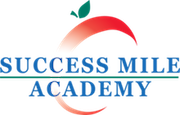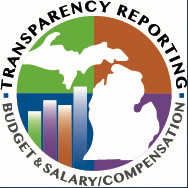 As your child moves through elementary school each year, they are learning and growing. It’s as if each student receives a suitcase when starting elementary school. Each year students add to that suitcase the most important items that helped them be successful, and which will help them remain so in the next grade. Elementary school the time for your child to fill that suitcase with all of the basics that they carry with them forever, and upon which their secondary and post-secondary schooling will be built. And that is why your choice of schools should be thoughtful.
As your child moves through elementary school each year, they are learning and growing. It’s as if each student receives a suitcase when starting elementary school. Each year students add to that suitcase the most important items that helped them be successful, and which will help them remain so in the next grade. Elementary school the time for your child to fill that suitcase with all of the basics that they carry with them forever, and upon which their secondary and post-secondary schooling will be built. And that is why your choice of schools should be thoughtful.
One of the most important items they will need inside their suitcase is responsibility.
According to Thomas Gladieux, responsibility is something every child must learn in elementary school.
“Children need to learn from a very early age that their decisions, behaviors and actions lead to important consequences every day,” said Gladieux. “The main thing they need to understand is that they can control the outcome, good or bad, based on how they approach each situation.”
Schools with outstanding achievement and disciplinary records often use a Responsive Classroom method of teaching and learning. A Responsive Classroom helps students prepare for and actively participate in the outcome of their day. Aspects of a Responsive Classroom include:
- Morning meetings – these meetings energize students and set the tone for the entire day. Students are reminded to say, “Good morning” and to share important information with each other. In some cases, students may share things that happened at home that could affect their mood in class. This allows other students to gain empathy for that student if something happened that caused their friends to be sad, or to celebrate with their friends if something great happened.
- Routines – students are taught that what they practice becomes a habit. Each good habit helps them have a productive and pleasant day. If rituals and routines result in expectations that are the same throughout the entire school, students feel comfortable and become better able to grow in the world around them. If students start to act out and cause problems, they are taught to practice positive behaviors until they become routine.
- Responsibility – students should be given the opportunity to grow in their responsibility. A responsive classroom allows students choice to learn the way they learn best. By choosing a certain method for counting (ie: using buttons or cut-outs of animals), they are taking responsibility for their own learning. Eventually, they will be given more and more responsibilities that expand to the entire school community such as safety patrol, student government and National Junior Honor Society.
- Community service – students who are given the responsibility to help others, gain a deep understanding of how to be part of the bigger picture. During the elementary school experience, students should begin to volunteer for activities that have an impact on their world.
- Personal learning plans – students, teachers and parents who work together to establish goals achieve higher levels of success. Every student learns differently and by setting goals that help students stretch further, they will reach higher levels than they thought possible. Some students need enrichment to help them grow. Others need interventions to bring them up to grade level. A personal learning plan helps determine the best path.
- Mastery at every level – many students are not successful because when the time comes for them to take an exam, they simply are not ready. The best educational outcomes happen when a child is given multiple opportunities to demonstrate that they can master a skill before they move on to the next level.
“It makes no sense to fail a child based on a test score,” added Gladieux. “At our school, if a student fails a test we have to assume that he or she didn’t master the skills necessary to move on. We then re-teach those skills and retest until he or she can demonstrate that they are ready for the next level.”
Giving multiple opportunities for success using different assessments allows students to really learn the material, which is the ultimate goal.
Demand for this type of learning environment is very high. At Success Mile Academy only a few seats are still available in grades K-8. If you are interested in applying, simply go to sm.mmsaonline.org and apply online. Open seats are offered on a first-come basis.


